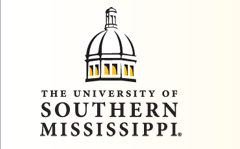Date of Award
Summer 8-2007
Degree Type
Dissertation
Degree Name
Doctor of Education (EdD)
Department
Curriculum, Instruction, and Special Education
Committee Chair
Dr. David Walker
Committee Chair Department
Curriculum, Instruction, and Special Education
Committee Member 2
Dr. Rose Jones
Committee Member 2 Department
Curriculum, Instruction, and Special Education
Committee Member 3
Dr. Beth Richmond
Committee Member 4
Dr. Kyna Shelley
Committee Member 5
Dr. Linda McDowell
Abstract
This study, a systematic replication of Dearman, Alber, and Atwood (2005), examines the effects of reflective conferencing on the frequency and type of differentiated instruction exhibited by six second- and third-grade teachers. This ABAB reversal design study extends previous research by including a special education teacher in reflective conferencing and by assessing maintenance phases. After training and baseline data were collected, teachers met for one hour weekly to examine student work and engage in conversations about their teaching. The meetings were discontinued during the second baseline phase and then re-established in the second intervention phase. Data were collected during independent practice sessions after classroom instruction. The established interobserver agreement levels were high in regard to frequency (95%, 94%, and 89%) and acceptable in regard to type (82%, 93%, and 83%) of differentiated instructional responses. Data were analyzed both visually and statistically due to specific limitations in the study. The frequency of differentiated instruction increased in each case in the intervention and maintenance phases at varying degrees. Throughout all sessions of the baseline phases, the mean frequencies of differentiated instructional events observed were 4.0 and 3.2, while the mean frequencies of intervention phases were 5.4 and 6.7, respectively. This defined a more cautious functional relationship than in the previous study (Dearman et al., 2005) with significant differences noted in three of the six teachers (p = 0.0379, p = 0.0069, and p = 0.0071). However, no significant relationship was noted between the addition of a special educator to the reflective process and the type of differentiated instructional behaviors exhibited. Furthermore, during the maintenance phase the mean frequencies established a clear and robust functional relationship, as the data appeared to stabilize at a higher number of events than at the intervention phases of the experiment.
Copyright
2007, Carla Curtis Dearman
Recommended Citation
Dearman, Carla Curtis, "REFLECTIVELY STUDYING STUDENT W ORK TOGETHER: COLLABORATE TO DIFFERENTIATE INSTRUCTION FOR ALL STUDENTS" (2007). Dissertations. 1229.
http://aquila.usm.edu/dissertations/1229
